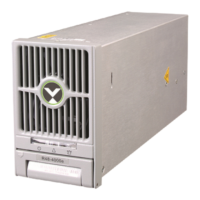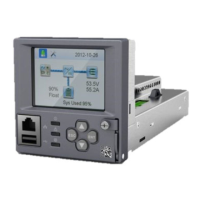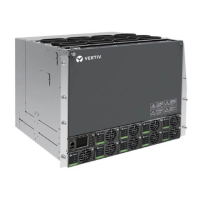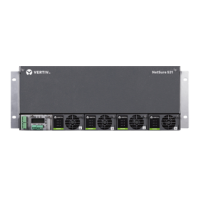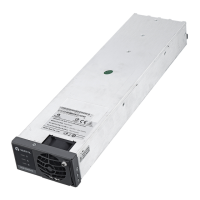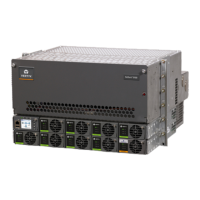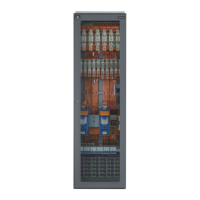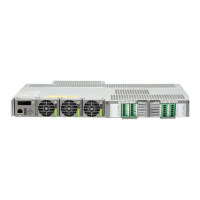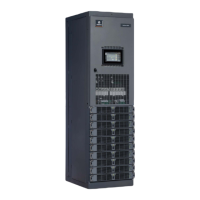NetSure
™
Control Unit (NCU)
User Manual, UM1M830BNA
Spec. No: 1M830BNA, 1M830DNA Code: UM1M830BNA
Model No: M830B, M830D Revision M, May 12, 2017
Battery Discharge Test
Battery Test Logs (maximum ten [10] tests saved)
Battery LVD (Low Voltage Disconnect)
Battery Capacity Prediction
Battery Block and Battery Midpoint Monitoring
Enhanced Battery Monitoring with SM-BRC
Thermal Runway Detection and Management
NOTE: Battery management functions are not available for
NCU configurations that enable NCU capability to receive
status information sent from FIAMM SoNick (Sodium Nickel)
batteries.
Battery Charge Temperature Compensation
The NCU can be programmed to automatically increase or
decrease system output voltage to maintain battery float current
as battery temperature decreases or increases, respectively.
Battery life can be extended when an optimum charge voltage to
the battery with respect to temperature is maintained.
Temperature is monitored by a sensor mounted on the battery.
See your power system documentation for temperature sensor
information. You can also set high and low compensation
temperature alarms.
Functional Description (See Figure 2):
Battery charge temperature compensation adds a correction term,
related to the temperature of the batteries, to the nominal value of
the system voltage. The degree of regulation (TempComp Coeff),
expressed in mV/°C/battery string, can be set per battery
manufacturer recommendations.
To protect batteries and voltage-sensitive loads, compensation is
automatically limited to a maximum of two volts (48V systems) or
one volt (24 volt systems) above or below the nominal output level
(float setting). Temperature compensation can be set to clamp
lower than this by enabling the Temperature Compensation Clamp
feature. When enabled, temperature compensation will clamp if
the battery temperature reaches either the Temp Comp Max
Voltage setting or the Temp Comp Min Voltage setting.
Temperature compensation is automatically disabled if
communication between the controller and all rectifiers is lost, a
DC over or under voltage alarm activates, a low voltage
disconnection occurs, manual mode is entered, or the system
enters the equalize or test modes.
Refer to “Specifications” on page 211 for temperature probe and
reading accuracy.
Battery Equalize Charge and Battery Charge Current Limit
The NCU can increase system output voltage for equalizing the
charge on all battery cells of a conventional flooded cell battery, or
for recharging the battery following a commercial power failure.
The charging function can be initiated cyclically (scheduled),
automatically, or manually.
Refer to the battery manufacturer's instructions for equalize
charging instructions.
Functional Description (See Figure 3):
Start of Charging: When the battery charge current
exceeds a preset value for three (3) minutes or if the
calculated battery capacity has decreased to a preset
value (after a commercial AC failure, for example), the
charging function of the NCU is activated. A charging
signal is sent from the NCU to the rectifiers to increase
the voltage up to the battery charging level V
equalize
.
Battery Current Limitation: After a commercial AC failure
or when some battery cells are permanently damaged,
the current to the batteries can be quite extensive. To
avoid overheating or further damages to the battery, the
NCU limits the battery current to a preset level by limiting
the charging voltage of the rectifiers. Should the battery
current still exceed a higher preset value, an alarm is
issued. Battery charge current is limited to the value set
in the controller, as long as battery voltage is above 47
VDC.
End of Charging: When the charging current drops below
a preset value, a defined prolonged charging time is
started before the charging is stopped and the voltage of
the rectifiers return to the float charging level (V
nom
). For
safety, there is an equalized charging limit time that
stops the charging after a preset time.
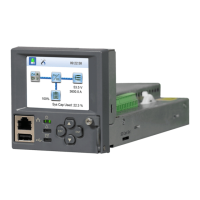
